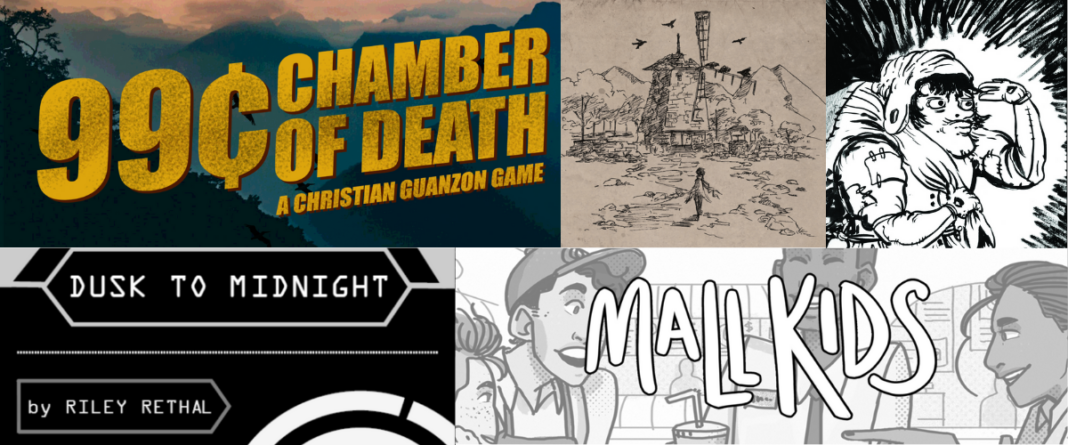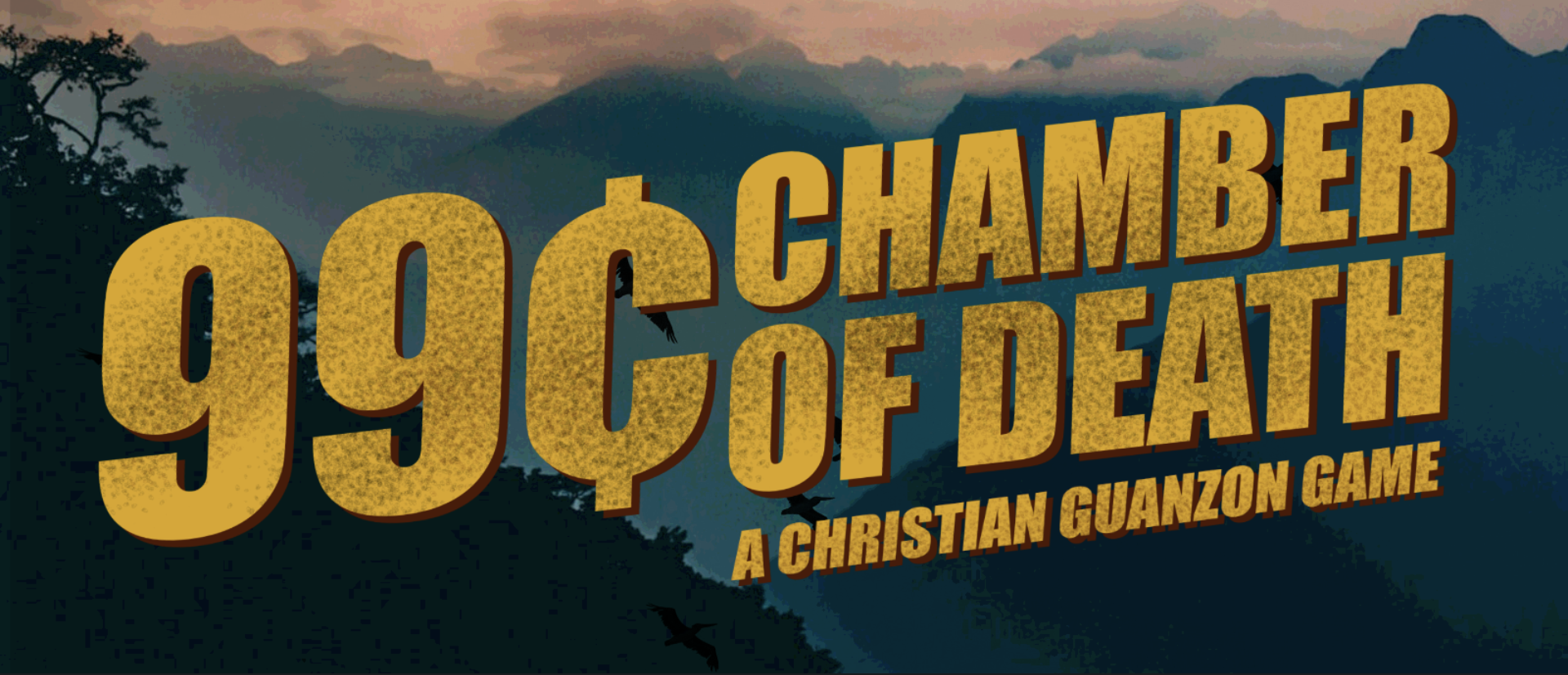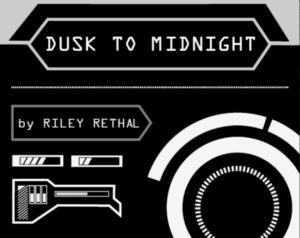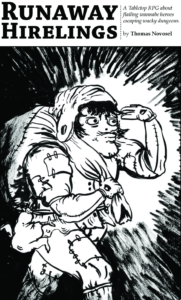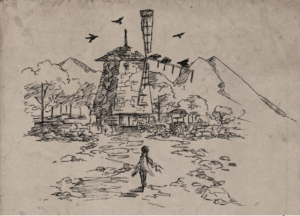Tabletop RPGs are sort of all the rage now, thanks to actual play podcasts like Critical Role and Friends at the Table, and a slew of spin-off comics and TV shows. More and more folks are curious about the genre now than ever – but it can be intimidating for first-timers. There are loads of rules to acquaint yourself with, you have to find someone in your friend group to be the dungeon master and the recurring time requirements can be tough on for those who can’t get together regularly.
If these are problems you relate to, you’re in the right place. This list is, as the title suggests, a collection of tabletop RPGs you and your friends can learn and play, all in one night. Most of these games don’t even call for a dungeon master, taking the pressure off of one single person. None of these games will make you draw loads of maps (okay except for one that is literally about drawing a map) or do excessive amounts of prep. Also notable is that this list collects games with rule books that you can read with everyone at the table, or in about 20 minutes beforehand. Sound good? Grab your dice, pens and paper and let’s get started.
99 Cent Chamber of Death
Let’s begin with the simplest of our list: Christian Guanzon’s 99 Cent Chamber of Death. This game about word-slinging and kung-fu has a single page rule book that gives you the bare minimum of what you need to play. You and your pals come up with a word bank, which you’ll use to create your character’s fighting style. When you find yourself in combat, you’re incentivized to use those words by coming up with a rap to throw your enemies off their game. The more of your style you use, the bigger the damage you deal.
Notably, though, this is where a game master comes into play – and I use that term loosely. 99 Cent Chamber of Death is minimal in every area, so one player will be tasked with making rulings on how powerful a rap is, coming up with enemies and providing a vague story based on a simple prompt: “Somewhere in New Jungle, the Big Boss searches for the Power and the Warriors need to stop them.” Obviously, experience with tabletop games comes in handy for this scenario; but also, this game thrives on word-vomit. AKA, a silly improv story is not only acceptable, but encouraged.
The minimalism continues when it comes to materials needed to play. 99 Cent Chamber of Death only requires a handful of six-sided dice (you could use the internet, too), some scrap paper and a few pens or pencils. Ah and a few silver-tongued warriors, of course!
How long does one game take? Literally as long as you want. Probably at least 30 minutes, but the length itself depends completely on how your GM tells the story. IE, it can go on until you stop having fun.
Do I have to play in person? Nope! Given that all you need of your comrades is to hear their voices, you could easily play over Skype or phone.
Dusk to Midnight
Riley Rethal’s Dusk to Midnight is a bit heavier in terms of mechanics (and tone), but it’s still easy to get started and fall into a rhythm. It puts you and your cohorts into the cockpits of a mecha team standing as the final bastion on the losing-side of a war. Players take turns describing scenes involving their character and using a handful of relationship-based stats and moves to resolve them. As you progress through the rounds, your destiny tracks fill. These determine two things: the length of the game and the fate of your specific character. Once a player’s destiny track fills, their character exits the game, having either died or given up, and the game ends when only one player remains.
As Rethal describes in the rulebook, Dusk to Midnight is, in its nature, a bit of a downer. That said, it’s also super interesting and accessible. All that you need to get started is a few six-sided dice and, either a printer to use the included character and reference sheets, or a few pieces of paper to keep track of stats. This is a nine page set of rules that you and all your pals should give a read for best results, primarily because it doesn’t require a game master. Instead, each player is given an equal chance to steer the narrative ship on their own terms. Not having to designate one person as the Knower of the Rules is a big part of what makes it great for beginners, but it does mean that everyone should have an idea of what they’re doing and how.
Can I play with folks over the internet? Sure!
How many friends to I need to assemble? It’s feasible with two, but at least three is probably optimal, given that a two player game would end after the first player’s exit.
How much TTRPG experience should I have? A vague idea of how they function is welcome, but even if you’ve just listened to someone play, you’ll be fine. Dusk to Midnight only involves a few rolls and even then, the meat of it is based on how you play out a scene.
Mall Kids
If robots aren’t your speed, maybe teen mall hangouts are. Lucky for you, that’s exactly what Matthew Gravelyn’s Mall Kids delivers. You and your squad take on the role of teenage mall employees, all trying to figure out if you’d rather earn a paycheck of shove it in your boss’ face. Each player starts off creating their very own teen, complete with pronouns, look and style. From there, you work together to figure out what the mall you work in is like and what’s going on there. Much like Dusk to Midnight, this game is told in scenes. The only difference is, this game takes place over the course of one day, meaning each round occurs in one of six beats representing different times of day.
If you want to do something risky during one of those scenes, that’s when your stats come in (don’t worry, there are only two). You compare whichever one is relevant to the result of a die roll and pick your outcome based on that. It’s a pretty straight-forward system with less than ten pages of reading and no game master. That said, it wouldn’t be asking too much to have your group read through it altogether right before getting started.
Once you’ve invited all your hormonal homies over, all you need to gather up is a few writing utensils, paper (or the printable character sheets) and three six-sided dice.
How long is a session? The rulebook estimates that a normal game of Mall Kids takes anywhere from 2-4 hours depending on how many players are involved (anywhere from 2-6), but that number can shrink if your group agrees to skip over a few rounds of play.
What if I want to be a mall kid for more than one day? You can totally do that! Although it’s designed for single-sessions, you and your group can hang out with these teens for an entire campaign if you so choose.
What if my friends don’t live nearby? Have them snag their own digital copy and get them on Skype!
Runaway Hirelings
Here’s a game that takes the standard Dungeons and Dragons scenario and flips it on its head. Instead of playing as a band of mighty adventurers, Thomas Novosel’s Runaway Hirelings imagines a scenario where the hero has reached the end of the dungeon and died fighting its final inhabitant. You and your friends were their titular hirelings and now, with your boss dead, it’s up to you to find your way back to the surface with as much loot as you can carry.
Like traditional TTRPGs, Runaway Hirelings does require a game master (called a Dunarch in this game). Although it’s not required, some experience is definitely recommended. This player’s job involves creating the dungeon as players explore it, describing a room’s pitfalls and rewards and so on. Like 99 Cent Chamber of Death, stream of consciousness improv is more than appropriate for the Hirelings tone.
Once one play has designated themselves as Dunarch, it’s time to decide on characters. There are several base hirelings you can choose from, each with a different specialty. The game begins with players selecting one of those and adding flavor by answering a few basic questions. From there, it’s time to escape! With your combined set of special skills, the Dunarch and the Hirelings create and overcome whatever obstacles you think will be entertaining. All you need to do so is a few pieces of paper to print out character sheets, some six-sided dice and pens or pencils.
Can I play Runaway Hirelings over Skype? Absolutely!
How long does it take to play? Here’s a direct quote from the rulebook “this game is meant to be played in however much time you set aside to play.” Neat!
What kind of prep is necessary? If you’re planning to be the Dunarch, you’ll definitely want to read through the rules before you sit down to play, which is only about 20 pages worth of text when all’s said and done. If you’re not confident in your improv skills, it can also be helpful to come up with a few random encounters for your Hirelings to overcome.
The Quiet Year
Where most tabletop RPGs on this list have players step into the shoes of individual characters, The Quiet Year pulls back and looks at a post-apocalyptic community and its environment. Together, you and your friends will create both of these things by naming resources and their availability and the general climate you inhabit. And you get to do this by collectively drawing a real map, which ends up as a nice keepsake! Once that’s done, The Quiet Year begins. Designer Avery Alder includes a set of 52 prompts for every card in a standard deck (one for each week of the year). Each suit is separated into seasons and shuffled individually, then players take turns drawing cards (playing out a ‘week’) and literally drawing on the map, until the Frost Shepherds arrive and usher in the end times.
The Quiet Year is a game about questions, answers and communication. Whoever draws a card is responsible for resolving whatever conflict it provides, but players are only allowed to give a sentence or two worth of input every week. You’re bound to step on someone’s toes – and the game accounts for that. Anytime you feel jipped or unheard, drop a contempt token to let others know. When the next discussion comes around and someone looks at your big pile of contempt, they may be more likely to throw you a bone – or maybe not! It’s gamified communication and that in itself is dope.
Here’s what you need to start building your own “community after the collapse:” a piece of paper for map-drawing, some writing utensils (colors great, but not required), some index cards, six six-sided dice, 20 contempt tokens (any random items will do) and a deck of playing cards.
How much time should I set aside to play? The Quiet Year is a lengthier game. Alder notes that the average play session is anywhere from 3-4 hours, but this can be shrunk down by excluding a few weeks. As far as learning the rules goes, at least one player should read them ahead of time, then the game actually recommends passing the book around and taking turns reading aloud, which shouldn’t take more than 15 minutes or so.
Can I play online? Honestly, this may be a rare case where you can’t. A big part of this game is physically adding things to the map by drawing on it and I’m not sure that a tool exists that would allow several players to do this. Roll20 does allow for sharing maps, but I haven’t tried it for this game myself.
EDIT: You CAN play The Quiet Year online thanks to the magic of Roll20.
How many friends do I need? Anywhere from 2-4!
Ready to play? Follow the links below to get your own copy of any of the TTRPGs listed below.


